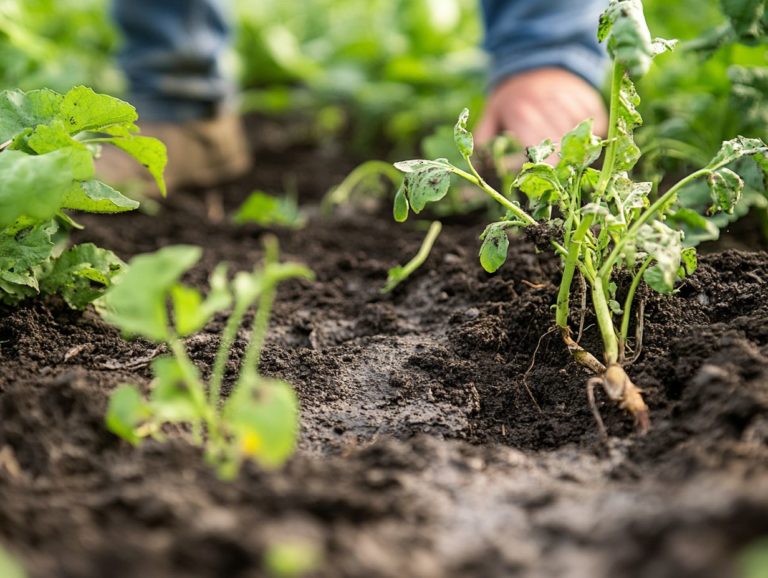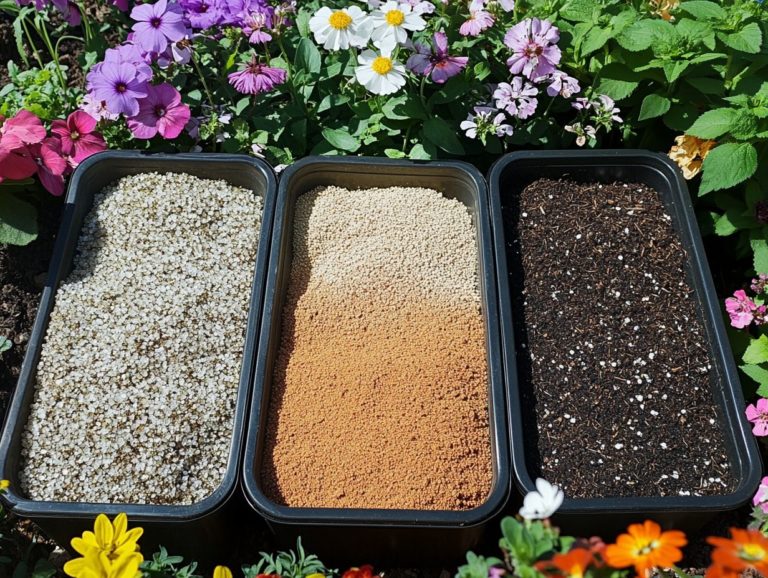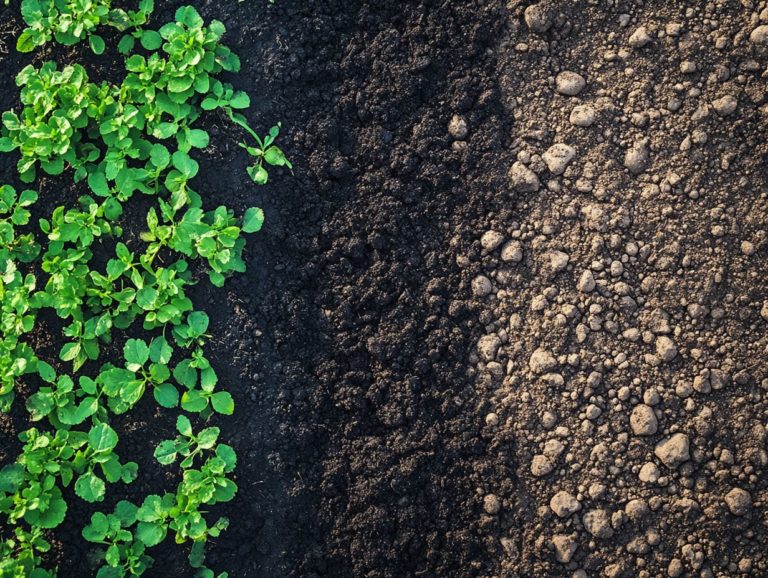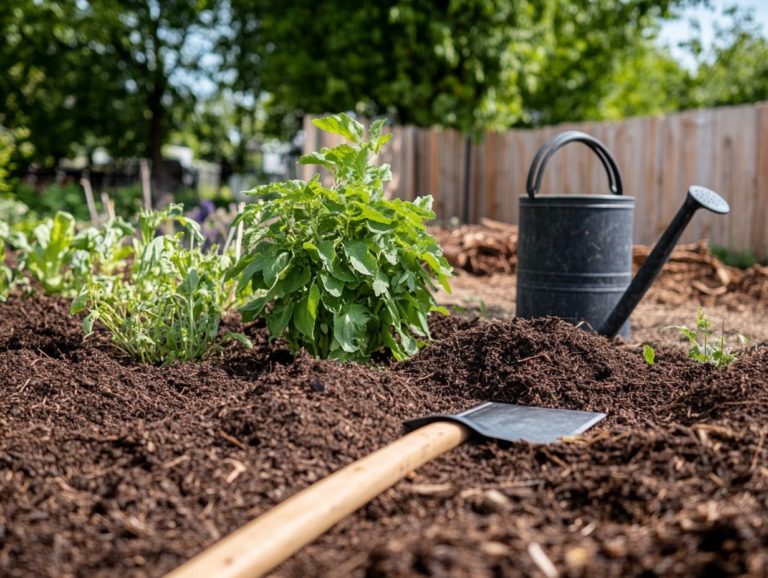The Science Behind Soil Respiration
Soil respiration is vital for our ecosystem. It often goes unnoticed. This process involves the exchange of carbon dioxide between the soil and the atmosphere, primarily driven by microorganisms working tirelessly beneath your feet.
Understanding how this process operates, the environmental factors that influence it, and its broader implications can illuminate critical issues such as climate change and agricultural productivity. This exploration delves into the details of soil respiration, from the microorganisms that make it possible to strategies for enhancing soil health.
Discover the incredible science behind this essential process and see how it connects to our daily lives!
Contents
Key Takeaways:
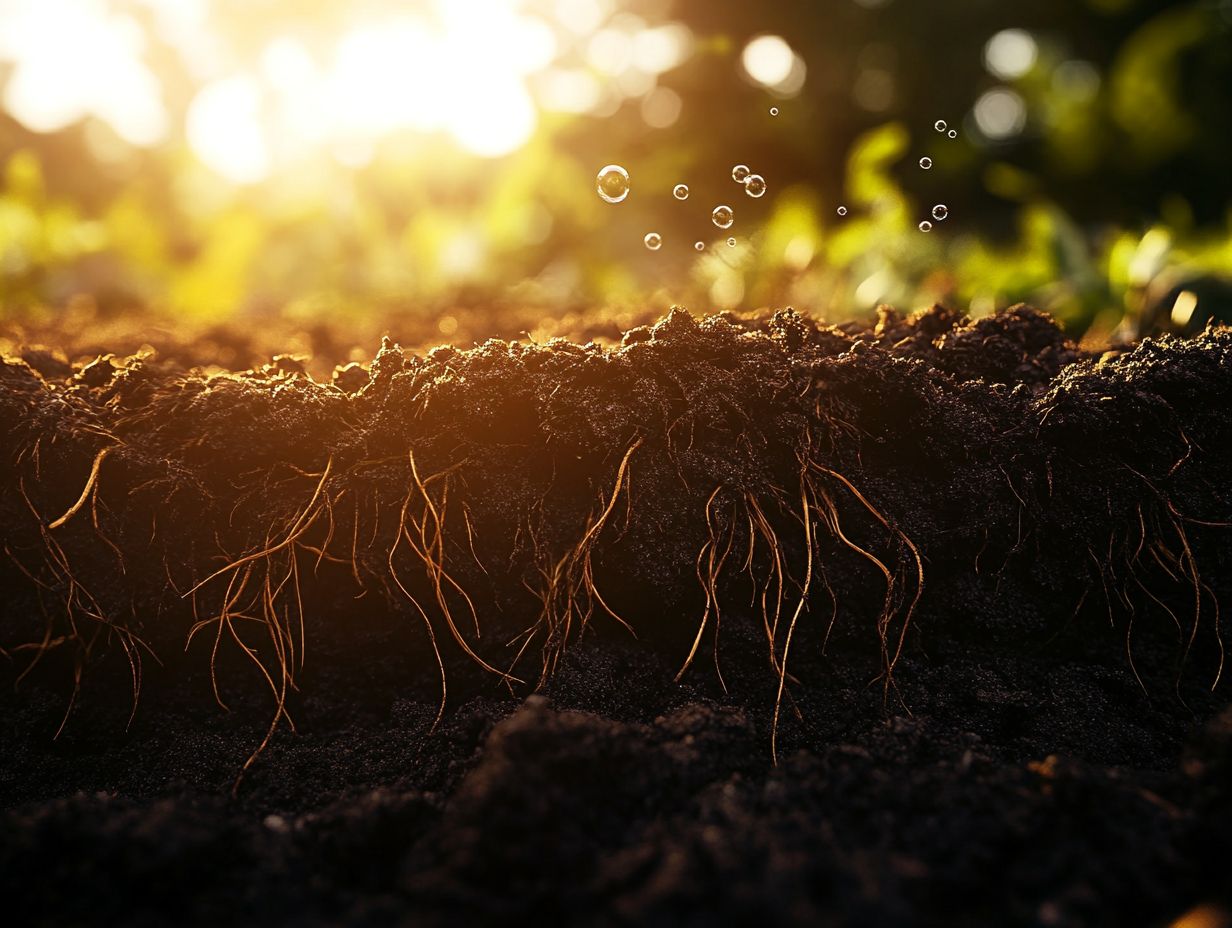
- Soil respiration is the process where microorganisms break down organic matter and release carbon dioxide.
- Bacteria and fungi are crucial for soil health and nutrient cycling.
- Factors like temperature, moisture, and plant root activity affect respiration rates.
Understanding Soil Respiration
Soil respiration is a crucial ecosystem process that facilitates the exchange of carbon dioxide between the soil and the atmosphere. This is largely propelled by microorganisms, including roots, that engage in aerobic respiration (which uses oxygen) and anaerobic respiration (which does not).
This process plays a vital role in carbon cycling, impacting soil organic carbon levels and ultimately influencing the health and productivity of entire ecosystems. For instance, this is especially significant in Khao Yai National Park in Southeast Asia, where forest dynamics are crucial for biodiversity.
Definition and Importance
Soil respiration releases carbon dioxide from the soil via microbial activity and root respiration. It is vital for maintaining ecosystem health and combating climate change.
This natural phenomenon is a key player in the carbon cycle, transforming organic matter into carbon dioxide that eventually enters the atmosphere, illustrating the importance of soil exudates in this process. It helps regulate carbon in the soil, affecting both land and water ecosystems, including forests and wetlands. In forest ecosystems, for example, the decomposition of fallen leaves significantly enhances soil respiration rates.
With rising carbon dioxide levels from human activities, understanding soil respiration is crucial to combat climate change. It directly impacts the trajectory of global warming, intensifying the greenhouse effect and leading to increasingly severe climate-related challenges, including alterations in weather patterns.
The Role of Microorganisms in Soil Respiration
The microbial community in soil is integral to soil respiration. These microorganisms adeptly break down organic matter through both aerobic and anaerobic respiration, significantly influencing respiration rates and nutrient cycles. This process greatly contributes to the release of carbon dioxide and other greenhouse gases, underscoring their essential role in the ecosystem.
Types of Microorganisms Involved
Soil respiration is shaped by a diverse array of microorganisms, including bacteria, fungi, and soil animals. Each group plays unique roles in both aerobic and anaerobic respiration processes.
These microorganisms also work together in intricate ecosystems that enhance soil health and contribute to vital nutrient cycling. This demonstrates the importance of maintaining a diverse microbial community. Bacteria often take the lead in facilitating aerobic respiration, breaking down organic matter and releasing essential nutrients. Some specialize in anaerobic processes, thriving in low-oxygen environments.
Fungi thrive in both conditions and are essential for decomposing complex organic materials like lignin and cellulose, ultimately enriching the soil. Soil animals, such as nematodes and earthworms, further enhance respiration by aerating the soil and fragmenting organic materials. This ensures respiration occurs efficiently and supports rhizosphere respiration.
Collectively, these interactions significantly amplify heterotrophic consumption, sustaining plant growth and soil fertility.
Factors Affecting Soil Respiration

Did you know that soil respiration rates change dramatically with environmental factors? Notably, soil moisture and soil temperature play crucial roles in regulating microbial activity. These elements shape microbial activity and impact the overarching carbon cycling processes within ecosystems, especially during the intricate stages of forest succession.
Environmental and Biological Factors
Environmental and biological factors, such as soil moisture, temperature, and the makeup of the microbial community, are pivotal in dictating soil respiration rates. These elements create a dynamic interplay that influences the activity levels of soil microbes and impacts the overall health of terrestrial ecosystems.
Maintaining adequate soil moisture acts as a vital conduit for nutrient transport, fostering microbial interactions and enhancing metabolic processes essential for respiration. In contrast, extreme temperatures can either speed up or slow down these processes, depending on the tolerance levels of the microbial community.
Grasping how fluctuations in these environmental conditions affect soil respiration is essential for anticipating ecosystem responses to climate change and promoting soil health.
Measuring Soil Respiration
Measuring soil respiration is vital for understanding the intricacies of carbon dynamics, especially regarding soil variability. Employing techniques like soil respiration chambers enables accurate quantification of CO2 efflux from the soil, which is essential for understanding gas exchange processes in ecosystems.
This approach provides invaluable insights into soil flux systems, enhancing your understanding of the ecosystem’s carbon processes.
Methods and Techniques
Common methods for measuring respiration involve using soil respiration chambers that effectively capture CO2 efflux. This allows monitoring of gas exchange between the soil and the atmosphere.
These chambers create a controlled environment where you can regulate variables like temperature and soil moisture. This makes it easier to discern their effects on soil respiration rates. Other techniques, such as infrared gas analyzers, offer real-time measurements, delivering immediate insights into the dynamics of the soil ecosystem.
Accurate data collection is crucial; understanding these respiration processes significantly enhances knowledge of carbon cycling. By knowing how much carbon is released from the soil, you can infer potential impacts on climate change and develop informed strategies for ecological conservation.
Implications of Soil Respiration
Soil respiration has profound implications for both climate change and agriculture. It relates directly to greenhouse gas emissions and carbon storage. This underscores the immediate need for implementing sustainable practices to mitigate adverse effects.
In conclusion, understanding soil respiration is essential for promoting healthy ecosystems and addressing climate challenges effectively.
Impact on Climate Change and Agriculture
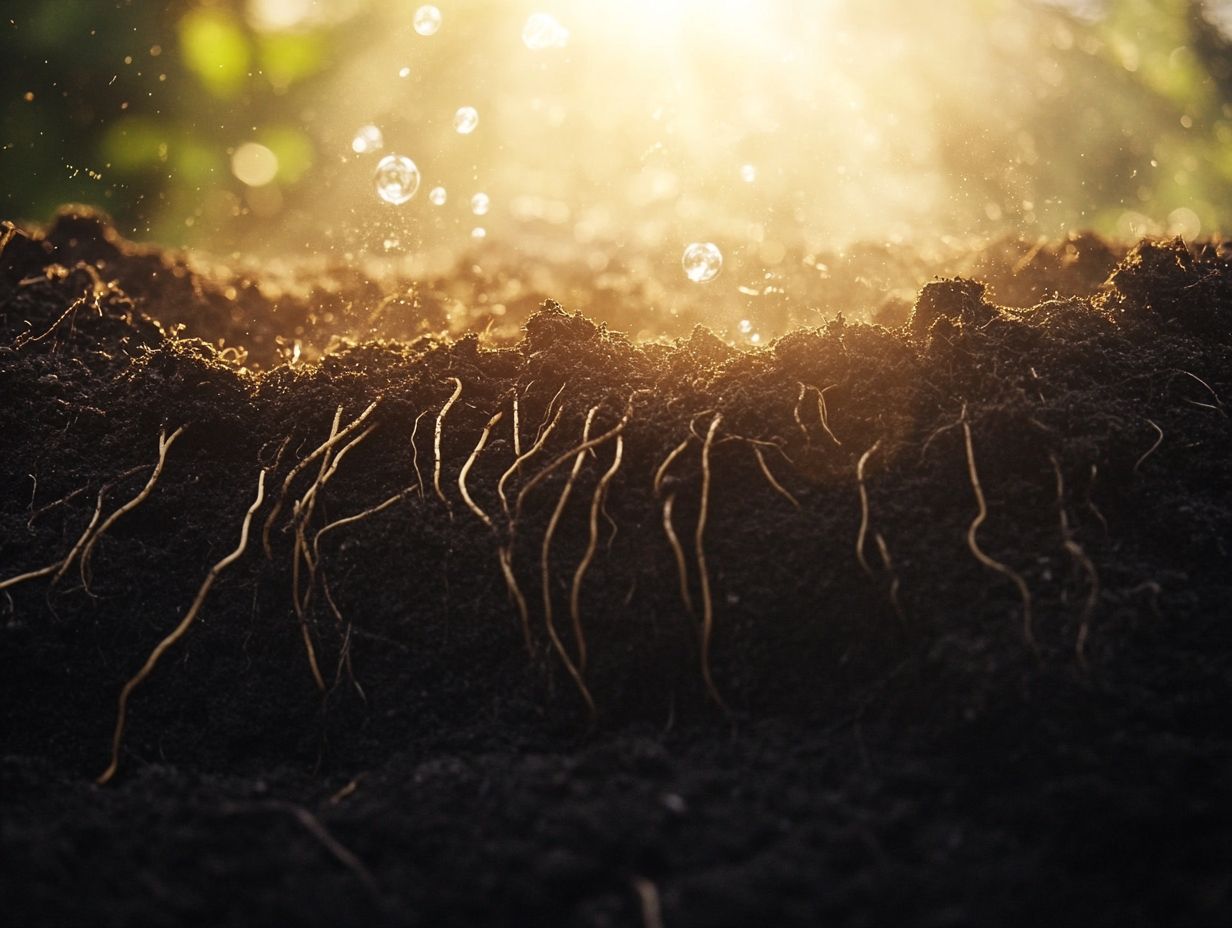
Soil respiration significantly impacts climate change. It plays a crucial role in releasing greenhouse gases and affects carbon cycling, which is important for sustainable agriculture, especially regarding nitrogen fertilization.
We need to understand this relationship! Rising temperatures can elevate soil respiration rates. As soils release more carbon dioxide and other greenhouse gases, they not only contribute to worsening climate change but also present risks to agricultural productivity.
Fluctuations in soil health and fertility directly influence your crop yields. A stable food supply is at risk as agricultural systems contend with the dual threats of changing climate patterns and declining soil vitality. This scenario highlights the urgent need for strategies that harmonize productivity with environmental stewardship.
Improving Soil Respiration
Enhancing soil respiration is essential for elevating soil health. You can achieve this through sustainable practices that encourage root respiration, optimize nitrogen fertilization, and boost carbon storage within the soil. These practices improve overall ecosystem services.
Strategies for Enhancing Soil Health
Strategies for enhancing soil health include implementing sustainable practices like proper nitrogen fertilization and increasing organic matter content. This approach boosts carbon storage and improves soil respiration.
To effectively achieve these goals, you can adopt various specific practices.
- For instance, crop rotation helps manage pests and diseases and contributes to a balanced nutrient profile in your soil.
- Incorporating cover crops is another vital strategy. They provide valuable organic matter when decomposed, fostering essential microbial activity that positively impacts soil respiration.
- Employing reduced tillage methods minimizes soil disturbance and maintains the integrity of soil structure, aiding in moisture and nutrient retention.
By diversifying these approaches, you can create a robust ecosystem that prioritizes long-term soil health.
Frequently Asked Questions
What is soil respiration and why is it important for carbon cycling?
Soil respiration is how living organisms in the soil release carbon dioxide (CO2) into the air. It s crucial for balancing our planet s carbon levels.
How does soil respiration occur?
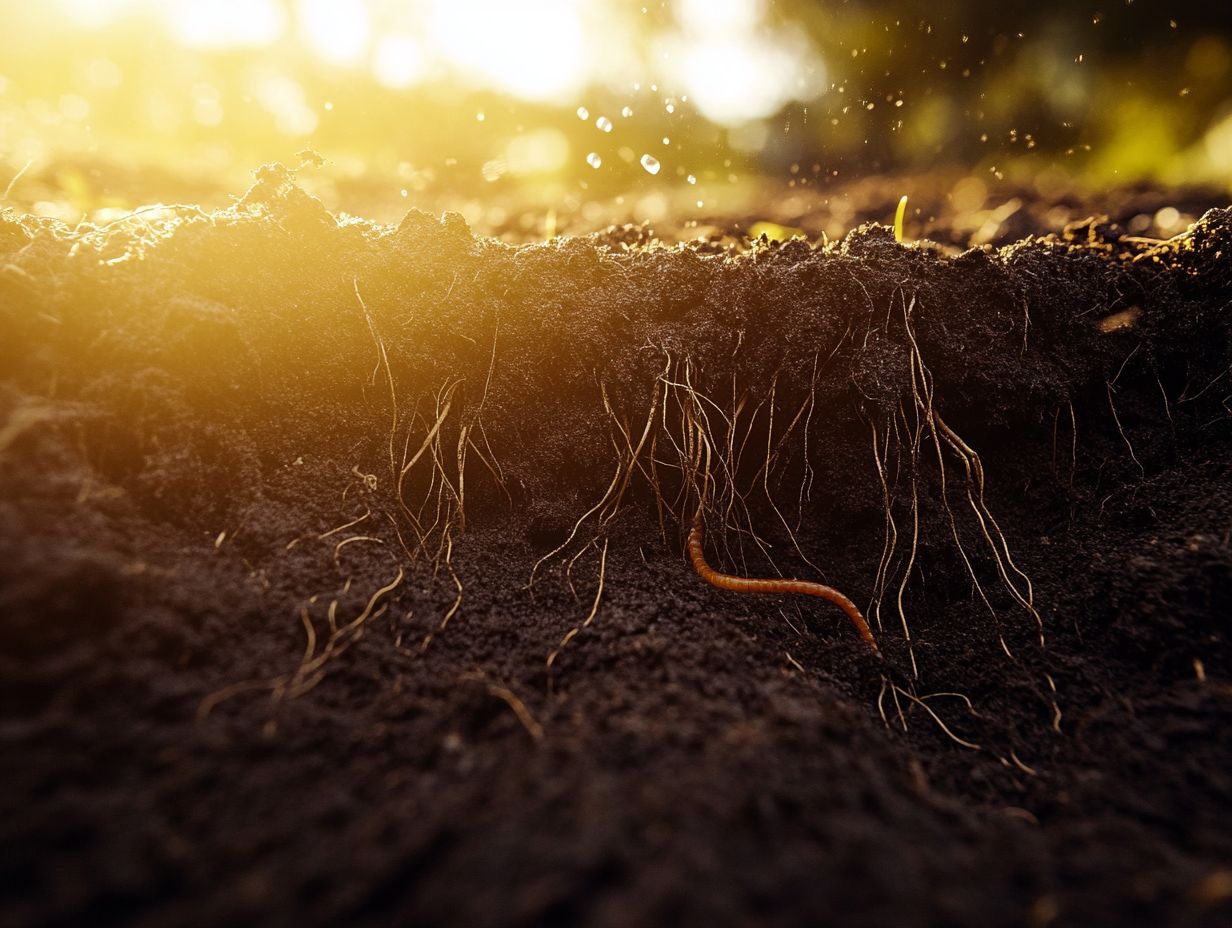
Soil respiration occurs through cellular respiration, where organisms break down organic matter and release CO2 as a byproduct. This process is carried out by both plant roots and microorganisms in the soil.
What factors affect soil respiration?
The rate of soil respiration can be influenced by various factors, including temperature, moisture, soil nutrients, and the type and abundance of living organisms in the soil.
How does climate change impact soil respiration?
Climate change greatly impacts soil respiration. Warmer temperatures can increase the activity of soil microbes, leading to higher rates of respiration and CO2 release. Changes in precipitation patterns can also affect soil moisture levels, which can impact respiration rates.
What are the potential consequences of increased soil respiration?
Higher rates of soil respiration can lead to larger releases of CO2 into the atmosphere, contributing to increased atmospheric CO2 levels and potentially worsening climate change. It can also decrease soil organic matter and nutrient availability, affecting plant growth and productivity.
How can we measure and monitor soil respiration?
Discover how we can measure soil respiration! Methods like infrared gas analyzers, soil respiration chambers, and soil CO2 sensors are at our disposal.
Long-term monitoring is crucial. It reveals how climate change and land management affect soil respiration rates, helping us make informed decisions.


